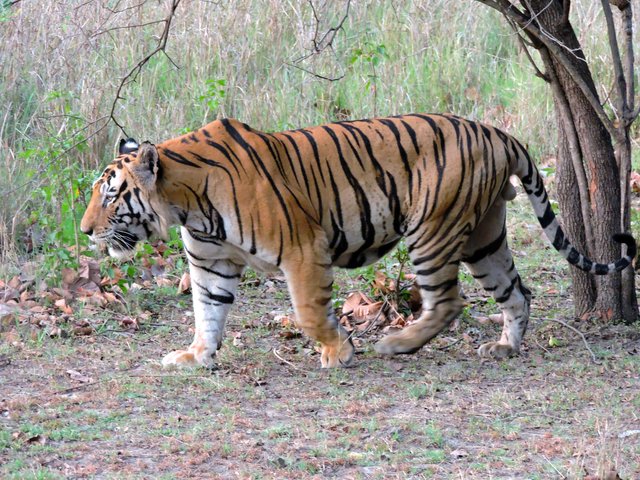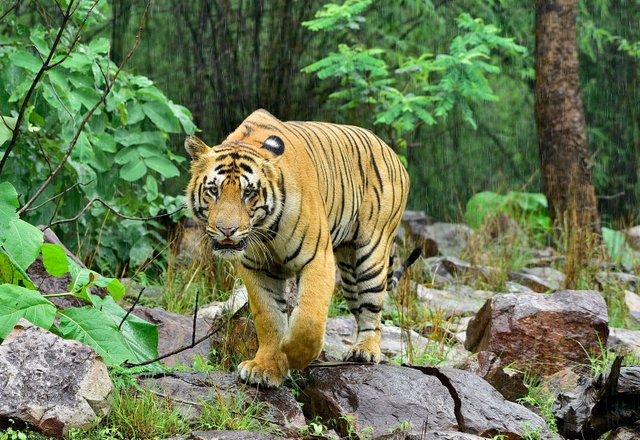Bangal tiger
The Bengal tiger (Panthera tigris tigris) is one of the most iconic and well-known tiger subspecies, native to the Indian subcontinent. Known for its striking orange coat with black stripes, the Bengal tiger is the most numerous tiger subspecies, though it remains endangered due to habitat loss, poaching, and human-wildlife conflict.
Physical Characteristics
- Size: Bengal tigers are among the largest of all tiger subspecies. Males typically weigh between 400 to 570 pounds (180 to 260 kilograms) and measure about 9 to 10 feet (2.7 to 3 meters) in length, including the tail. Females are smaller, weighing around 220 to 350 pounds (100 to 160 kilograms) and measuring about 8 to 9 feet (2.4 to 2.7 meters) long.
- Coat: Their fur is a bright orange with dark, vertical stripes. The pattern of stripes is unique to each tiger, serving as a form of identification similar to human fingerprints.
- White Bengal Tigers: Occasionally, Bengal tigers are born with a genetic mutation that results in white fur with black stripes and blue eyes. These are not albinos, as they still have pigment in their stripes and eyes.
Habitat and Distribution
Bengal tigers are primarily found in India, with smaller populations in Bangladesh, Nepal, Bhutan, and Myanmar. They inhabit a variety of environments, including tropical and subtropical rainforests, grasslands, and mangroves. Significant populations are found in reserves and national parks such as Sundarbans, Ranthambhore, and Bandhavgarh.
Behavior and Diet
- Diet: Bengal tigers are apex predators and primarily hunt large prey such as deer (sambar, chital), wild boar, and buffalo. They are solitary hunters, relying on stealth and power to catch their prey.
- Territory: Each tiger has a large home range, which they mark with scent markings and vocalizations. Males have larger territories that may overlap with several females.
- Reproduction: Females give birth to litters of two to four cubs after a gestation period of about 104-106 days. Cubs remain with their mother for up to two years before becoming independent.
Conservation Status
The Bengal tiger is listed as Endangered on the IUCN Red List. Conservation efforts include habitat preservation, anti-poaching measures, and programs to reduce human-tiger conflict. Initiatives like Project Tiger in India have been crucial in stabilizing and increasing tiger populations in certain areas.
Cultural Significance
The Bengal tiger holds immense cultural and symbolic significance in the regions where it is found. It is a national symbol of India and Bangladesh and features prominently in folklore, art, and literature. The tiger is also a key species in the ecosystems it inhabits, playing a critical role in maintaining the balance of these environments.
Despite facing significant threats, the Bengal tiger continues to captivate and inspire conservation efforts worldwide, symbolizing both the beauty and fragility of the natural world.



Congratulations, your post has been upvoted by @upex with a 0.68% upvote. We invite you to continue producing quality content and join our Discord community here. Visit https://botsteem.com to utilize usefull and productive automations #bottosteem #upex